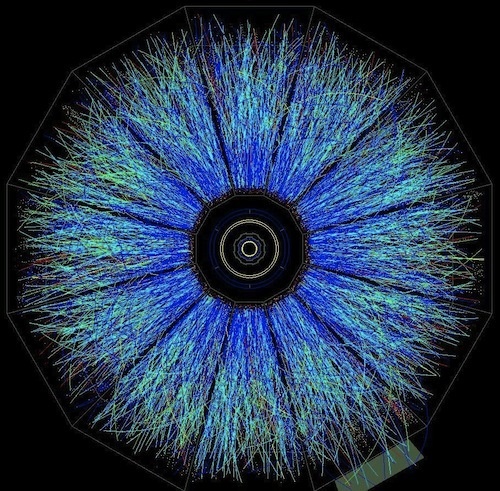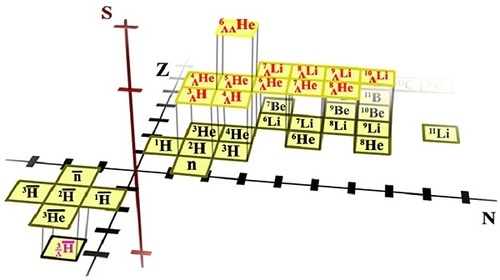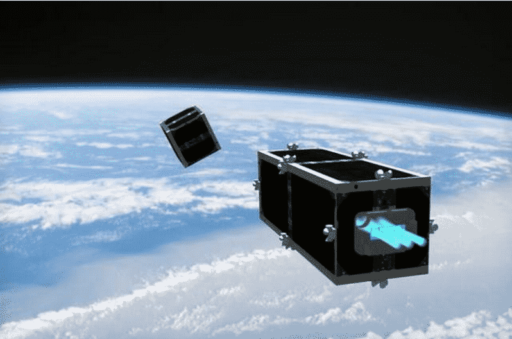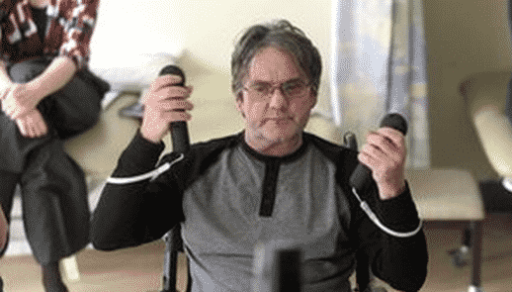Seconds after the Big Bang, the Universe was a soup of matter and antimatter. But today, everything around us is matter. So what and where is the antimatter? Last week, scientists came one step closer to finding out.
Working with the Relativistic Heavy Ion Collider (RHIC) in upstate New York, a group of scientists discovered what they called “an exotic form of antimatter” which contains the heaviest antinucleus ever recorded. According to Brookhaven National Labs:
The new antinucleus . . . is a negatively charged state of antimatter containing an antiproton, an antineutron, and an anti-Lambda particle. It is also the first antinucleus containing an anti-strange quark. “This experimental discovery may have unprecedented consequences for our view of the world,” commented theoretical physicist Horst Stoecker, Vice President of the Helmholtz Association of German National Laboratories. “This antimatter pushes open the door to new dimensions in the nuclear chart – an idea that just a few years ago, would have been viewed as impossible.”
What does this potentially world-shattering discovery really mean?
The elements that make up basic matter contain protons and neutrons. Now if we were to organize these elements by the amount of protons they contain, we would end up with the standard two-dimensional Periodic Table of Elements we saw in chemistry class. Physicists take it a step further and organize the table by not only the number of protons, but the number of neutrons while adding an entirely new third dimension that measures a nuclei’s “strangeness.” (S on the table below, Z represents number of protons and N, neutrons)
So what makes a particle strange? Protons and neutrons are made of quarks, while to be “strange” a nuclei must contain a strange quark. Normal nuclei have a strangeness value of 0, while nuclei that contain strange quarks (called hypernuclei) have strangeness values above one. Antimatter, on the other hand, contains anti quarks, and just last week scientists at the Relativistic Heavy Ion Collider (RHIC) discovered the first traces of antihypernuclei that contain previously only theorized antistrange quarks, thus opening the door to negative strangeness values.
Now why does this matter? According to Jinhui Chen, postdoctoral researcher at Kent State University, “The strangeness value could be non-zero in the core of collapsed stars, so the present measurements at RHIC will help us distinguish between models that describe these exotic states of matter.” On top of this the collisions at RHIC recreate conditions in the first few microseconds of the big bang, where matter and antimatter were in created in equal abundances. In discovering antihypernuclei, scientists open the door to figuring out what violations of this matter/antimatter symmetry occurred in the early Universe that lead to “normal” matter being the dominant species of matter in the universe and in the end the existence of the Earth and you.





